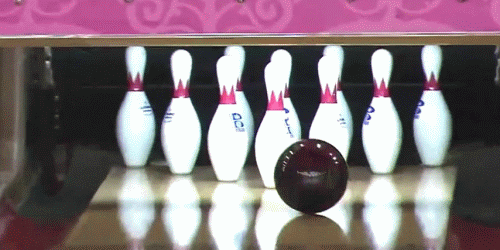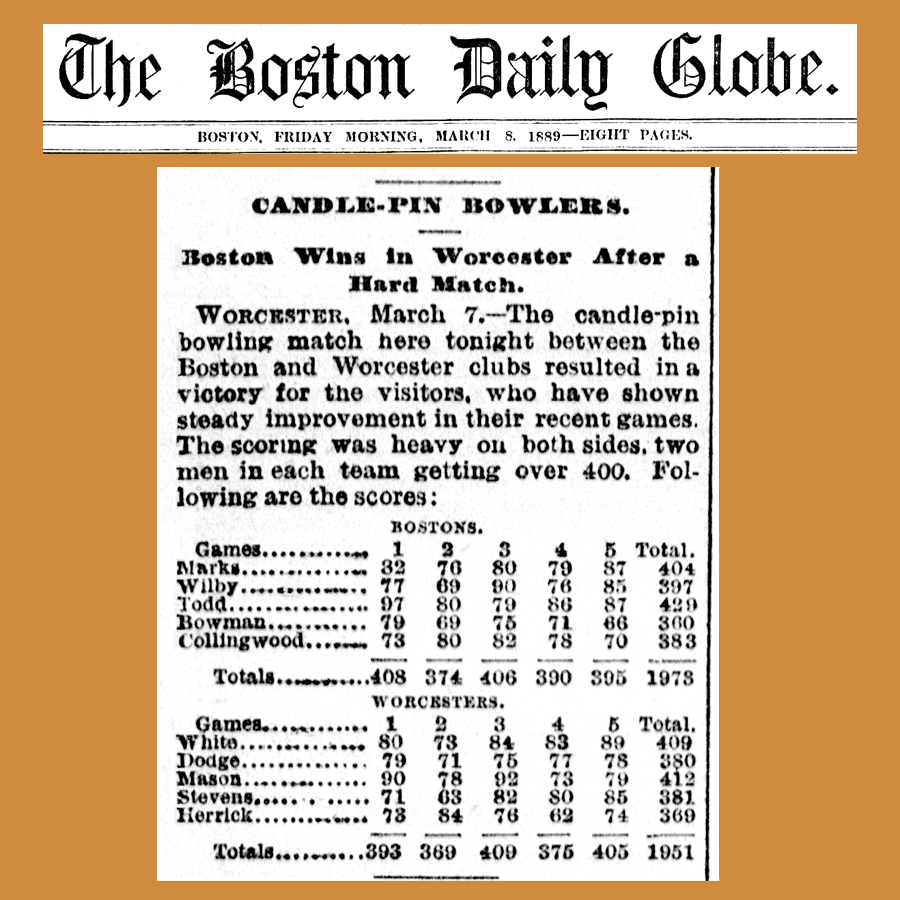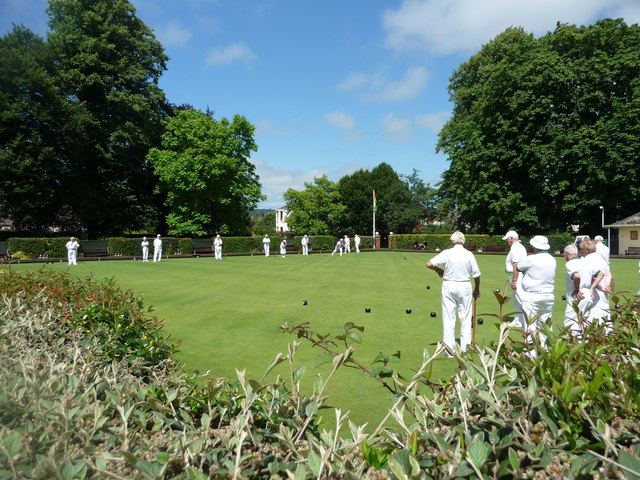|
Lofting (bowling)
Lofting (by a bowler) in bowling is throwing a bowling ball a short or long distance down the lane. This is usually done with the bounce-pass technique, but can also be done with a straight ball. Lofting is sometimes discouraged by the bowling community and bowling alley employees, because it can sometimes cause damage to the ball and lanes. However, this is somewhat untrue. Loft will almost never cause major damage to a ball, nor will lofting cause damage to (synthetic) lanes. Many bowling alleys that use wooden lanes will either have signs that tell the bowlers not to loft, or an employee will inform the bowlers not to do so, because wooden lanes can be dented by a lofted ball. Lofting the ball before the arrows in some bowling alleys is not against the rules. Some professional bowlers do loft a considerable amount under certain lane conditions. Crankers and other high-rev players may be forced to loft under dry conditions in order to delay the ball's reaction and prevent it fro ... [...More Info...] [...Related Items...] OR: [Wikipedia] [Google] [Baidu] |
Bowling
Bowling is a target sport and recreational activity in which a player rolls a ball toward pins (in pin bowling) or another target (in target bowling). The term ''bowling'' usually refers to pin bowling (most commonly ten-pin bowling), though in the United Kingdom and Commonwealth countries, bowling could also refer to target bowling, such as lawn bowls. In pin bowling, the goal is to knock over pins on a long playing surface known as a ''lane''. Lanes have a wood or synthetic surface onto which protective lubricating oil is applied in different specified oil patterns that affect ball motion. A strike is achieved when all the pins are knocked down on the first roll, and a spare is achieved if all the pins are knocked over on a second roll. Common types of pin bowling include ten-pin, candlepin, duckpin, nine-pin, and five-pin. The historical game skittles is the forerunner of modern pin bowling. In target bowling, the aim is usually to get the ball as close to a mark as ... [...More Info...] [...Related Items...] OR: [Wikipedia] [Google] [Baidu] |
Bowling Ball
A bowling ball is a hard spherical ball used to knock down bowling pins in the sport of bowling. Balls used in ten-pin bowling and American nine-pin bowling traditionally have holes for two fingers and the thumb. Balls used in five-pin bowling, candlepin bowling, duckpin bowling, and European nine-pin bowling have no holes, and are small enough to be held in the palm of the hand. Ten-pin balls Specifications The USBC and World Bowling promulgate bowling ball specifications. USBC specifications include physical requirements for weight (≤), diameter (—), surface hardness, surface roughness, hole drilling limitations (example: a single balance hole ''including'' the thumb hole for "two-handed" bowlers), balance, plug limitations, and exterior markings (structural and commercial), as well as requirements for dynamic performance characteristics such as radius of gyration (RG; 2.46—2.80), RG differential (≤0.06), and coefficient of friction (≤0.32). The USBC banned weight ... [...More Info...] [...Related Items...] OR: [Wikipedia] [Google] [Baidu] |
Cranker
In the sport of ten-pin bowling, there are many different ways in which to deliver (known as a "throw" or "roll") the bowling ball in order to advance it toward the pins in an accurate and powerful manner. Generally, there are three basic forms of 10-pin bowling. The most basic form is known as stroking, which is the most classic form. The most powerful form is known as cranking, which imparts great leverage and maximum rotation on the ball, but sacrifices accuracy. In between the two is the domain of the tweener, who has characteristics of both, but does not truly fit into either category. A well-known variant of "tweening" is the power stroker. Power stroking is often very similar to cranking and bowlers can often fit in either category, therefore bowlers that use one of these two styles are often simply known as power players. A fourth style, known as helicopter, spinning, or UFO, is a style that is used to great effect in Asia. Finally, many modern bowlers have changed to a on ... [...More Info...] [...Related Items...] OR: [Wikipedia] [Google] [Baidu] |
Candlepin Bowling
Candlepin bowling is a variation of bowling that is played primarily in the Canadian Maritime provinces and the New England region of the United States. It is played with a handheld-sized ball and tall, narrow pins that resemble candles, hence the name. Comparison to ten-pin bowling As in other forms of pin bowling, players roll balls down a 60 foot, wooden or synthetic lane, to knock down as many pins as possible. Differences between candlepin bowling and ten-pin bowling include: # Each player uses three candlepin balls per frame, rather than two. # Candlepin balls are much smaller, being in diameter and weigh 2 lbs. 7 oz, at most. They are almost identical in weight to a pin, as opposed to in ten-pins, where the ball can weigh more than 4 times as much as a pin. # There is no oil applied to the lane, so the ball does not skid, but rolls all the way down the lane. # Candlepin balls lack finger holes. # Candlepins are thinner (hence the name "candlepin") which increases the ... [...More Info...] [...Related Items...] OR: [Wikipedia] [Google] [Baidu] |
Candlepin Bowling
Candlepin bowling is a variation of bowling that is played primarily in the Canadian Maritime provinces and the New England region of the United States. It is played with a handheld-sized ball and tall, narrow pins that resemble candles, hence the name. Comparison to ten-pin bowling As in other forms of pin bowling, players roll balls down a 60 foot, wooden or synthetic lane, to knock down as many pins as possible. Differences between candlepin bowling and ten-pin bowling include: # Each player uses three candlepin balls per frame, rather than two. # Candlepin balls are much smaller, being in diameter and weigh 2 lbs. 7 oz, at most. They are almost identical in weight to a pin, as opposed to in ten-pins, where the ball can weigh more than 4 times as much as a pin. # There is no oil applied to the lane, so the ball does not skid, but rolls all the way down the lane. # Candlepin balls lack finger holes. # Candlepins are thinner (hence the name "candlepin") which increases the ... [...More Info...] [...Related Items...] OR: [Wikipedia] [Google] [Baidu] |
Bowling
Bowling is a target sport and recreational activity in which a player rolls a ball toward pins (in pin bowling) or another target (in target bowling). The term ''bowling'' usually refers to pin bowling (most commonly ten-pin bowling), though in the United Kingdom and Commonwealth countries, bowling could also refer to target bowling, such as lawn bowls. In pin bowling, the goal is to knock over pins on a long playing surface known as a ''lane''. Lanes have a wood or synthetic surface onto which protective lubricating oil is applied in different specified oil patterns that affect ball motion. A strike is achieved when all the pins are knocked down on the first roll, and a spare is achieved if all the pins are knocked over on a second roll. Common types of pin bowling include ten-pin, candlepin, duckpin, nine-pin, and five-pin. The historical game skittles is the forerunner of modern pin bowling. In target bowling, the aim is usually to get the ball as close to a mark as ... [...More Info...] [...Related Items...] OR: [Wikipedia] [Google] [Baidu] |
Hook (bowling)
A hook in ten-pin bowling is a ball that rolls in a curving pattern (as opposed to straight). The purpose of the hook is to give the ball a better angle at the 1-3 pocket (right-handers) or 1-2 pocket (left-handers.) to achieve a strike. When a ball is rolled straight, hitting the pocket must be precise. By hooking the ball, the ball will hit the pins with more force, producing better carry - especially on the 5-pin during a strike ball. Straight roll - even when it hits the pocket, will tend to leave a tap such as the 5-pin on a light hit, or the 10-pin if the ball was just slightly right of center pocket or with inadequate entry angle. A hook ball can achieve strikes with less precise hits. A hook ball can also help the bowler shape the shot on challenging oil patterns. In duckpin bowling, candlepin bowling, and nine-pin bowling, hook potential is greatly reduced since the balls are generally rolled much faster and thus have less time for a hook to develop. Techniques Ther ... [...More Info...] [...Related Items...] OR: [Wikipedia] [Google] [Baidu] |
Ten Pin Bowling
Ten-pin bowling is a type of bowling in which a bowler rolls a bowling ball down a wood or synthetic lane toward ten pins positioned evenly in four rows in an equilateral triangle. The objective is to knock down all ten pins on the first roll of the ball (a strike), or failing that, on the second roll (a spare). An approximately long ''approach'' area used by the bowler to impart speed and apply rotation to the ball ends in a ''foul line''. The , lane is bordered along its length by ''gutters'' (''channels'') that collect errant balls. The lane's long and narrow shape limits straight-line ball paths to angles that are smaller than optimum angles for achieving strikes; accordingly, bowlers impart side rotation to ''hook'' (curve) the ball into the pins to increase the likelihood of striking. Oil is applied to approximately the first two-thirds of the lane's length to allow a "skid" area for the ball before it encounters friction and hooks. The oil is applied in different lengt ... [...More Info...] [...Related Items...] OR: [Wikipedia] [Google] [Baidu] |






